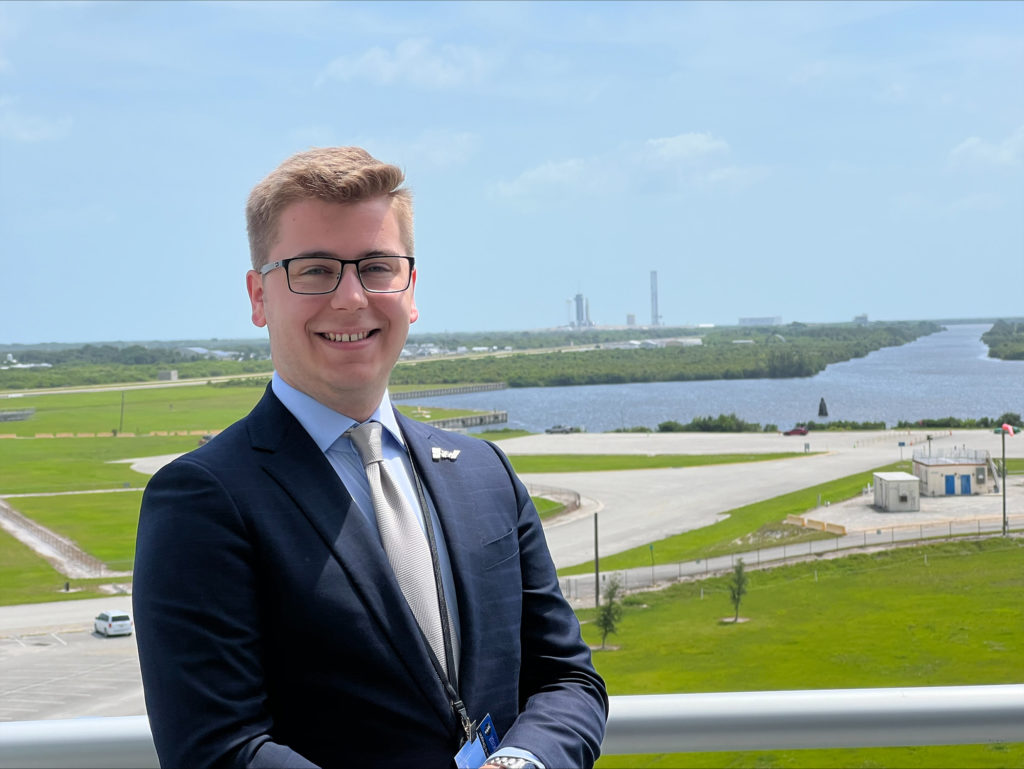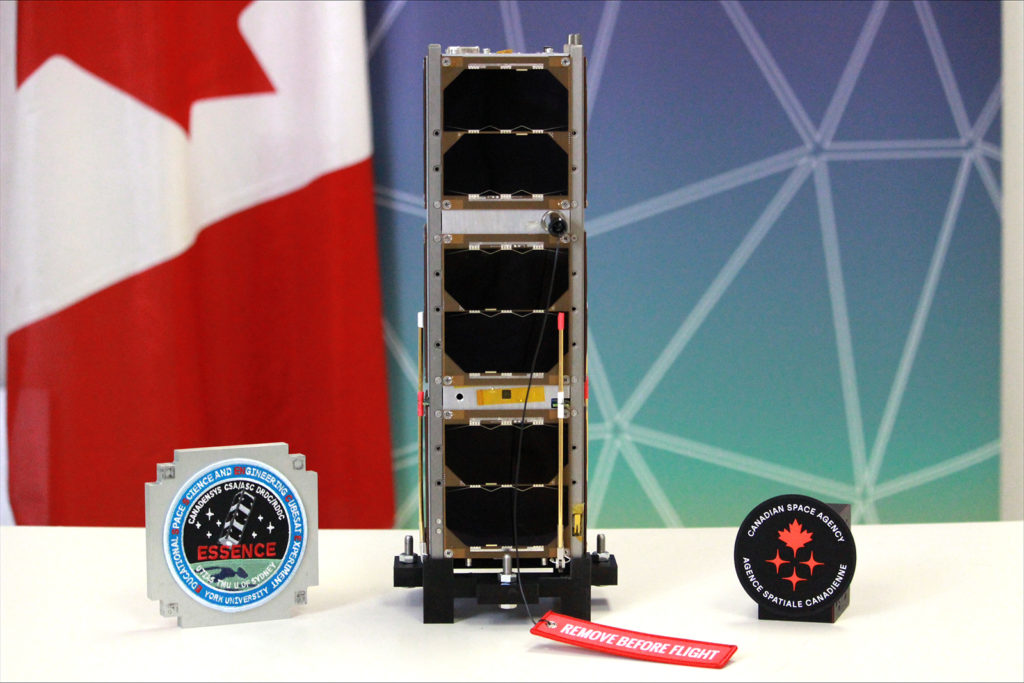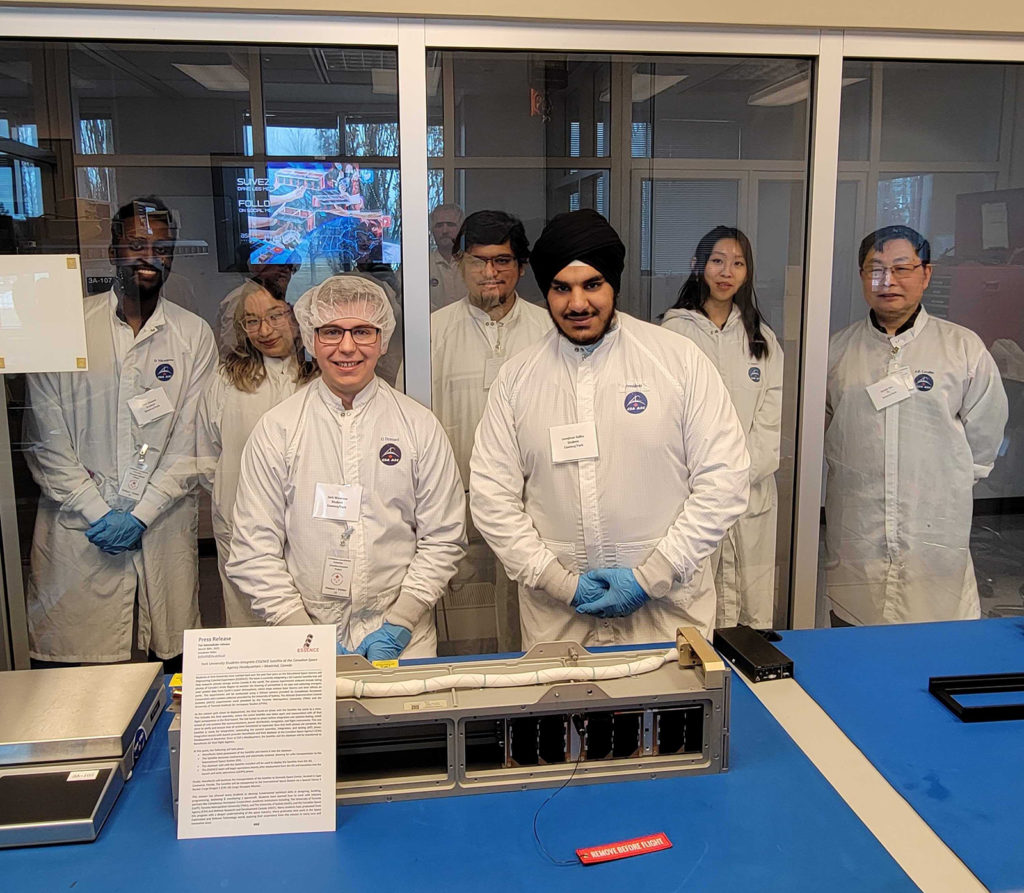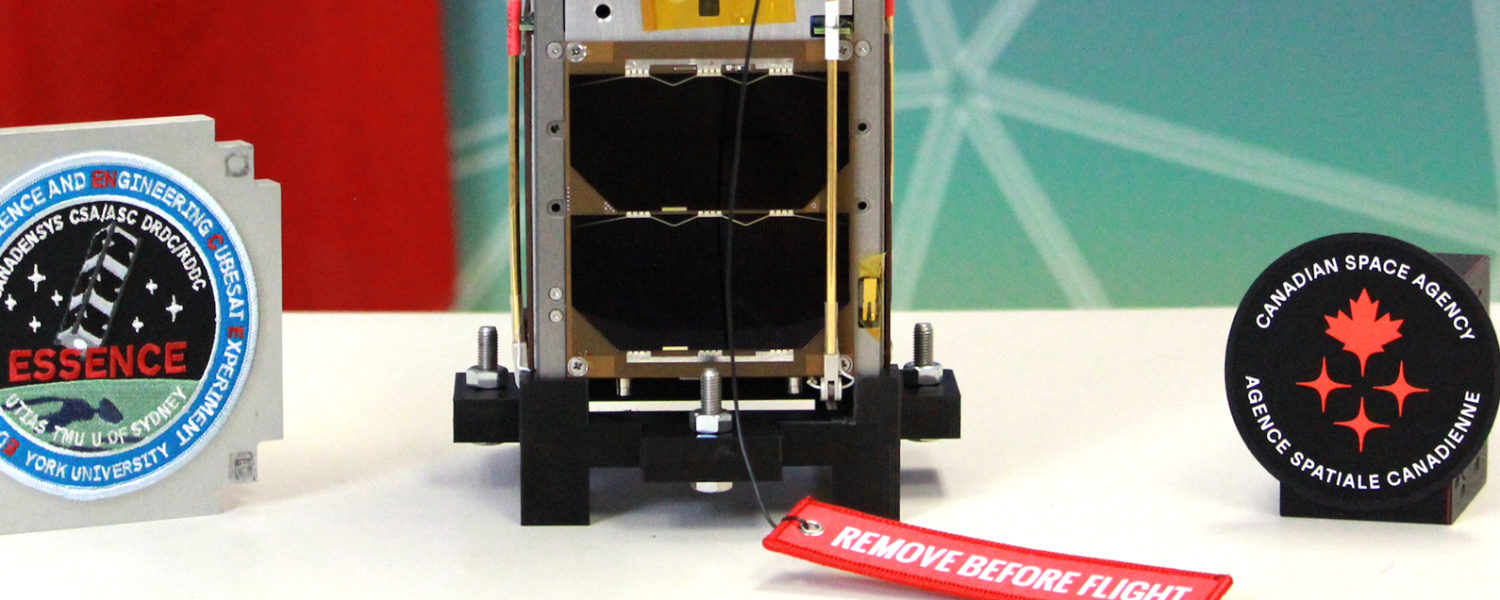Jack Wawrow Discusses Canada’s
New Climate Research Satellite
Story by Ryan Percy
Many kids go through their space phase, leading to countless telescope purchases and bright-eyed wishes to one day be an astronaut. But while many grow out of this, seeing it as just a childhood phase, Jack Wawrow took his love of space to new heights.
It was June 5, in a clear sky Cape Canaveral, Florida, when Jack watched his dream come true. Three years of blood, sweat and tears leading up to the countdown before watching a satellite he helped build launch up towards the ISS (International Space Station).

“Everybody was just so nervous wanting to see the rocket launch,” Jack says of that fateful morning. “It wasn’t even until the last 10 seconds that it really sunk in that this was happening. As soon as T-minus Zero hit it was a wave of emotions as three years of my life culminated at this moment.”
The satellite that Wawrow and the rest of the ESSENCE team constructed is known as a CubeSat. The small satellite is roughly 10 cm by 10 cm by 30 cm and is put on the ISS for later deployment in orbit above the Earth. The project is primarily to forward environmental study of Canada’s permafrost.
“Its main goal is to image the northern Arctic ice and permafrost regions as well as do a couple other experiments on board,” Jack says of the plans for the ESSENCE project over its three-year lifespan. “We’ve got a wide-angle camera to image the arctic and also a proton detector to measure space weather.”

Jack was able to get involved with the ESSENCE project as a volunteer during his Space Engineering undergrad at York University. He says a major factor in him even pursuing this path was a deep love of space, something he attributes with thanks to his parents.
“My parents would be a little upset if I didn’t mention they brought me to the Kennedy Space Center when I was really young,” Jack laughs as he explains how his parents laid the groundwork that would lead him down his education path. “I even have a picture of me as a newborn in a little NASA onesie.”
His parents helped push him towards a love of space. He says the moment that really cemented his decision came when he read the story of another Canadian with deep ties to space.
“As I got older I still kept that passion for space,” Jack says. “But it was when I read Chris Hadfield’s book An Astronaut’s Guide to Life On Earth that I really saw myself wanting to do space engineering. I ended up reading that book and it was something that motivated me to put my life on track to working in the space industry.”
With a plan in place to head for the lofty pursuit of space engineering, he had to focus on his schooling. He had to find a way to test the waters and see if engineering was even the right thing for him. Thankfully he found what he was looking for at Holy Names Catholic High School.
“My experience on the robotics team at Holy Names was by far the biggest contributor to the success that I’ve had with engineering school,” Jack says of how his time at Holy Names further cemented his desire and pursuits. “Mrs. Catherine Tillie and Mr. Peter Jansen, the two robotics teachers at Holy Names, the time and dedication they put into the team and just the enthusiasm that they had for it really rubbed off on me. Seeing all the different challenges that might come with an engineering project before I even began my engineering undergrad was an incredibly huge benefit.”
From there he went to York, studying in their Space Engineering program. Much like how robotics had given him an extracurricular activity to work on his skills, he used the opportunity to actually work on a real-life satellite to further hone his skills during undergrad.
While the allure of helping to further important environmental research served to push him towards ESSENCE, the heart and soul of his decision to join he put simply. “It was more so about getting the chance to build a satellite,” Jack says. “Obviously climate change research is just one of the amazing applications that you can have with satellites. But being able to actually build a satellite was one of the main reasons I joined the team.”

All the work was for the good cause of furthering human understanding of our own environment. But it had the secondary effect of helping Jack and the 60-100 other volunteers that took part across the project’s 6-year timespan to end up as highly qualified personnel in the space engineering field.
Jack helped spearhead the project in the final three years as both the project manager and the systems engineering team lead. It was his job to make sure things followed the plan, even when moments got rough.
“As far as low points go, we were at our worst when the flight battery failed back in July of 2022,” Jack says. “It had unexpectedly short circuited and we were just a few months out of delivery and we had to present a failure report to the NASA ISS Safety Group with help from the Canadian Space Agency and the battery manufacturer. We had to not only get a new battery but get it qualified and then assembled into the satellite.”
It was a moment where everything could have fallen apart.
“I remember walking out of there and saying it’s going to take a miracle to deliver the satellite on time,” Jack says of the darkest moment of the project. “Then sure enough, March rolls around and we’re good to go.”
This all led to the final moment as a portion of the team drove down to watch their project launch. As it blasted off towards the ISS Jack had a moment of relief before he turned to his teammates.
“I made sure that everybody on the team knew they had personally contributed to this success and nobody could take away their contributions,” Jack says of the moment after launch. “This was a massive team effort. Every step along the way had someone who was an expert or specialist. I also thanked everyone for helping make my childhood dream come true.”




Add comment